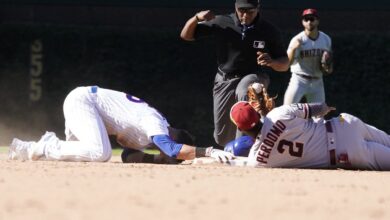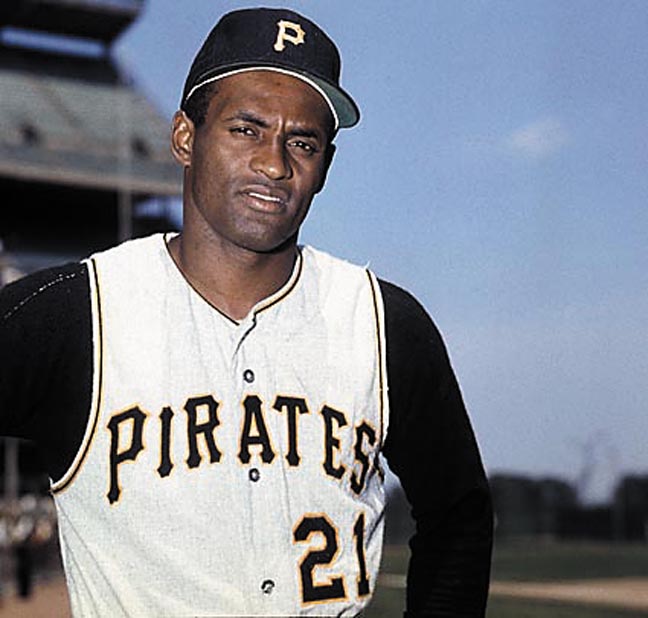


As the season winds down to its conclusion, the Chicago Cubs are trying to put the best face on what’s been going on at Wrigley Field this season. Monday’s game was the smallest Labor Day crowd in a quarter century, but it was a seemingly respectable 31,000 plus. And then, on a weekday game against a woeful Marlins team, they drew slightly more than 20,000 fans.
This was the smallest crowd at Wrigley in over a decade, and about half of what a typical crowd would have been a decade ago. Time was when anything under 35,000 was practically unthinkable, for any game against any opponent. But those days now seem to be very far away.
To address the issue of falling attendance, Cubs Chairman Tom Ricketts gave an interview to the Chicago Cubs beat reporter for the Chicago Sun-Times. Many of the statements made seemed like damage control, but the money quote for me was the following nugget:
“We’re not disappointed with this year’s attendance. We’ll be in the 2.7 [million] range.”
It struck me as odd, at first blush, that the word “million” was not uttered by Ricketts himself. I can only assume this to be so, since the reporter added the word in brackets. Perhaps baseball attendance numbers are just thrown around that way, in an offhand manner where “millions” are just understood by all involved. But my high school physics teacher once cured me of this dereliction of measuring units.
But what’s more intriguing is Ricketts went to the attendance numbers, apparently without being prompted to do so. Attendance numbers, back in the early years of this century, were the Chicago Cubs fan’s trump card when it came to measuring the team against the White Sox on the other side of town.
Even though the White Sox went on to win a World Series back in 2005, they struggled to break 20,000 at the gate sometimes. Cubs fans, on the other hand, interpreted the regular 39,000-plus crowd at Wrigley to be evidence of a superior fan base. I was as guilty of this mindset as anyone else, back in those days.
But the 2.7 [million] number is flawed for two reasons, one of them small, and the other one quite large. First, the small reason: The Chicago Cubs need to average just under 37,000 fans for the final nine home games of the season to reach 2.7 million in attendance. They may have trouble getting there, and here’s why:
- The Atlanta Braves have the best record in the game right now, but they’ll have little, if anything, to play for when they come to town two weekends from now.
- The Pittsburgh Pirates, with their winning season finally secured and dreams of big things in October, aren’t likely to draw very well in the final series at Wrigley on September 23, 24 and 25.
- This weekend’s series between the Chicago Cubs and the Milwaukee Brewers has some regional appeal, but the truth is these teams are fighting to avoid the basement of the NL Central, and the arrival of football season — both college and pro — will push baseball even further into the background. While the Cubs might approach 30,000 for these games, they probably won’t exceed that number by very much.
The final count for the Cubs’ home slate is likely to be in the 2.5 or 2.6 [million] range, not 2.7 [million] as Ricketts had predicted. Maybe the “range” term was a qualifier, intended to set things up to look better than they really are. “Putting lipstick on a pig” is probably as good a term as there is for describing this.
But there’s a much bigger issue which Tom Ricketts did not care to address in the interview. If the first problem is pig-sized, this other problem is an elephant, bigger than anything you’ll ever see in a zoo. And that has to do with the nature of what “attendance” really means.
Anyone who is savvy enough to find this website probably already knows this, and my apologies to those who do. But the casual fan might see 20,000 in attendance and envision that many fans sitting in the stands. In truth, however, that’s not the way it works. Attendance just means that there were 20,000 tickets sold for the game.
I can remember a time where you would take your game ticket up to a gate, hand the ticket to an usher, and they would tear off part of the ticket and hand the stub back to you. Over the past few years, though, that’s been replaced by a barcode scanner, where the ticket (or a piece of paper, if you printed your tickets out at home) is scanned and recorded electronically.
There were 20,000 tickets sold to the Chicago Cubs game, and that’s the number that was reported in the box score. But how many of those 20,000 tickets were actually scanned at the ballpark is something that Tom Ricketts and his bean counters know very well, but won’t ever share with the likes of you and me.
For every fan who went to the ballpark and had his or her ticket scanned, there were likely just as many fans who paid for a ticket but didn’t use it, or couldn’t find anyone to sell or give the ticket to. Those fans, in the parlance of our times, are considered as no-shows.
The number of no-shows is significant for two reasons. First, it’s a self-evident fact that no-shows don’t buy beer. They don’t go to the gift shop, either. A no-show does nothing more than buy a ticket. I’m sure that every beer vendor at Wrigley Field knows if there were really 20,000 fans in the stands on Wednesday.
But the other reason why no-shows are important is for next year, and not in the metaphorical “Wait ’til next year!” sense, either. Many of the no-shows bought tickets long ago, and decided to spend hundreds — or even thousands — of dollars to guarantee themselves tickets to games that turned out to be meaningless.
Will those fans make the same commitment again for 2014, once the renewals are sent out? Some will, but others will not. As unpleasant as eating tickets in 2013 must be, it will make those same fans think long and hard about re-upping to possibly do the same thing again in 2014.
So, by mentioning the attendance numbers and claiming they aren’t so bad, Ricketts is playing to fans on the fence for next year. The actual attendance numbers — what’s referred to sometimes as the gate — aren’t anywhere near the 2.7 [million] range this year. And that’s the direct result of the shortcomings of the team on the field.
While Chicago Cubs fans this year have voted with their feet — if not with their money — next year’s verdict remains to be seen. Announced crowds in the mid-teens [thousands] per game haven’t been seen in quite a while at Clark and Addison. But who knows? Maybe going the White Sox route in attendance will lead to the same results that they had back in 2005. That wouldn’t be a bad thing at all.





